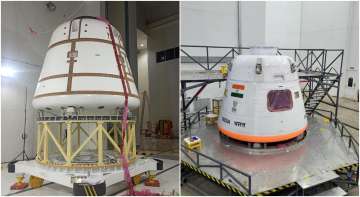The Indian Space Research Organisation (ISRO) is set to carry out the first of several test flights ahead of the Gaganyaan mission on October 21 at the Satish Dhawan Space Centre in Sriharikota in Andhra Pradesh.
Speaking at a felicitation programme of the ISRO engineers involved in the Chandrayaan-3 and Aditya L-1 missions, Science and Technology Minister Jitendra Singh informed that the test vehicle development flight (TV-D1) will be conducted to check the crew module that is scheduled to house Indian astronauts during the human spaceflight in 2024.
What does the test involve?
The test involves launching the module to outer space, bringing it back to earth and recovering it after touchdown in the Bay of Bengal. The Navy has already started mock operations to recover the module, Singh said. The TV-D1 will test both the crew module and the "crew escape" mechanism, which is intended to return the crew to Earth if the spacecraft encounters difficulties as it ascends into space.
Significance of the test
The success of the test will set the stage for the first unmanned "Gaganyaan" mission and ultimately, a manned mission to outer space in a low-earth orbit, the minister said. Before the ultimate manned "Gaganyaan" mission, there will be a test flight next year, which will carry "Vyommitra", a female robot astronaut, Sing added.
About the Gaganyaan project
The Gaganyaan project envisages a demonstration of human spaceflight capability by launching a human crew to an orbit of 400 km and bringing them safely back to Earth by landing in Indian sea waters. The Test Vehicle is a single-stage liquid rocket developed for this abort mission. The payloads consist of the Crew Module (CM) and Crew Escape Systems (CES) with their fast-acting solid motors, along with CM fairing (CMF) and Interface Adapters.
The CM is where the astronauts are contained in a pressurised earthlike atmospheric condition during the Gaganyaan space mission, the ISRO stated. This flight will simulate the abort condition during the ascent trajectory corresponding to a Mach number of 1.2 encountered in the Gaganyaan mission. This unpressurised CM version has to have an overall size and mass of actual Gaganyaan CM. As per the space agency, the CM in this mission is extensively instrumented to capture the flight data for evaluation of the performance of various systems.
(With PTI inputs)
ALSO READ: ISRO offers sneak peek at first crew module for Gaganyaan test flight | PICS
